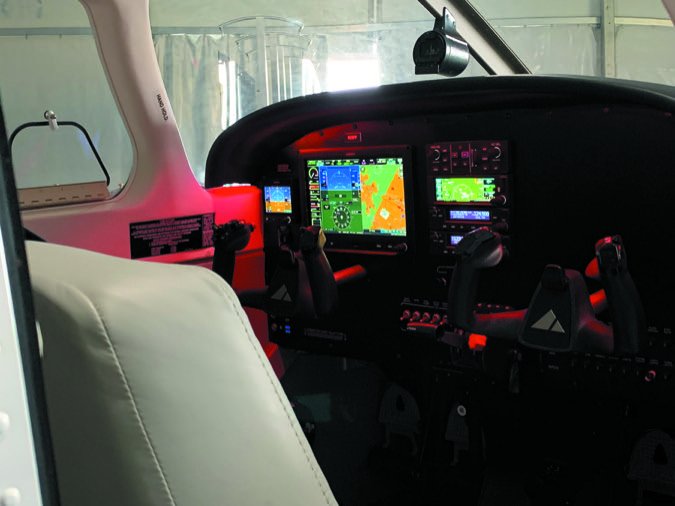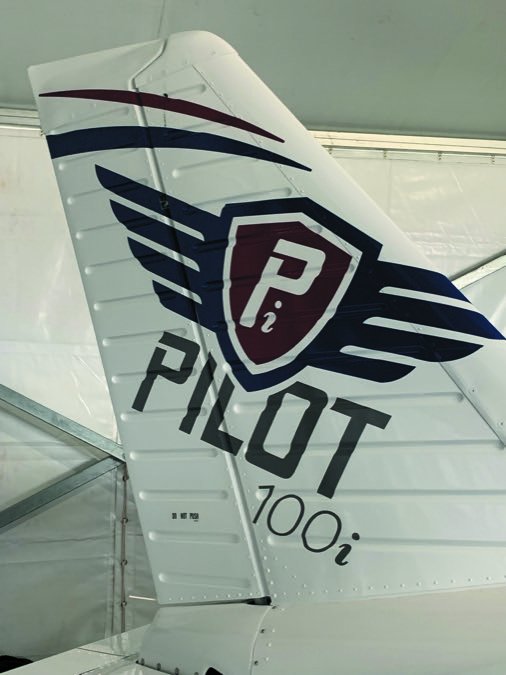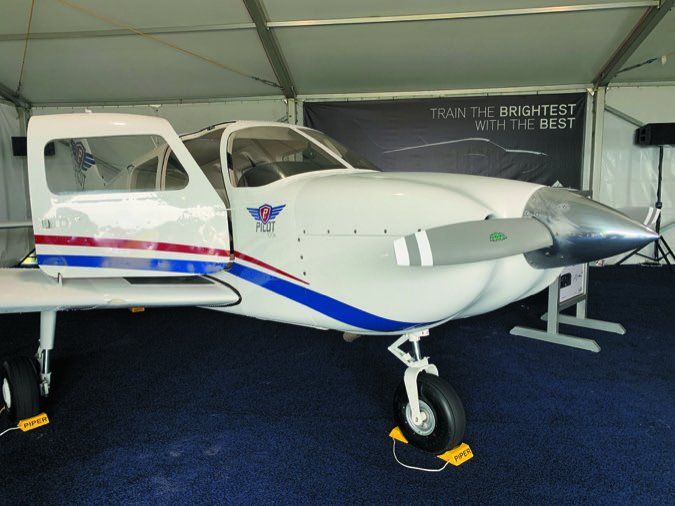On an otherwise underwhelming first day at the Sun ‘n Fun fly-in this past April, Piper surprised the press by unveiling its new 100-series trainer-the Pilot 100 and Pilot 100i.
At first blush these airplanes resemble Piper’s venerable PA-28 Archer, which isn’t necessarily a bad thing in the training environment for which they’re aimed. But a closer look reveals sizable differences compared to the current $369,000 Archer TX.
Price aside (the VFR-only Pilot 100 is $259,000 and the IFR-equiped 100i is $289,000), the models have new avionics, a new Continental engine and a three-place cabin configured with an observer station.
Forget about LSAs, at least for the training environment, suggests Piper president Simon Caldecott, who thinks light sport-derived trainers are misplaced in the training environment.
But the familiar and reliable-dispatch PA-28 airframe is a different story. It retains Archer styling (less the third window-it’s gone on the Pilot) and the student-friendly airframe design that mechanics know how to wrench.
Enter Continental
While the Textron Cessna Skyhawk has slumped, Piper has achieved sizable success selling both the Warrior and Archer in the training market, and the new Pilot series is aimed at small flight schools that want a new glass cockpit airplane that’s engined to stand the test of time between overhauls.
The Continental Prime certified engine series was introduced in 2017, and the Prime nomenclature simply represents a new name for Continental’s line of components.
The IO-370-D3A Prime to be used on the Pilot 100 makes 180 HP at 2700 RPM. The TBO is 2200 hours. Piper’s Caldecott pointed out that the company thought long and hard for over three years about which engine and avionics it would use in the trainer, which had to be priced we’ll south of $300,000-a price that might be the sweet spot for healthy flight schools. “There is nobody else there at that price point,” Caldecott said.
He also reiterated that fuel injection is standard on the new 100-series aircraft, but optional on the Archer. In our view, every buyer might fully expect fuel injection as standard. The IO-370 engine is mated to a Sensenich two-blade fixed prop.
Garmin G3x Touch

While Garmin was showing off the once-experimental but now STC’d G3X Touch integrated avionics retrofit in a Grumman Tiger at the show, Piper had the suite lit up in the Pilot 100i on display. The basic model 100 is equipped with VFR-limited avionics, including a Garmin GTR225 comm radio and GTX335R transponder with ADS-B In and Out.
But the $259,000 Pilot 100 still gets the G3X Touch with a 10.6-inch PFD/MFD with electronic charting, synthetic vision and no autopilot. For an additional $9500, schools can equip the Pilot with a third observation seat and a GMA245R remote audio panel with Bluetooth.
The premium for the IFR-capable gear in the Pilot 100i boosts the price to $289,000. It includes the Garmin GFC500 autopilot with ESP envelope protection, a GTR225 secondary comm radio and a GMA245R remote audio control panel with Bluetooth. For backup, the suite includes the Garmin G5 EFIS.
Versus Cirrus, for Half the Price
Selecting the Continental for the Pilot 100 is somewhat opposite of what Cirrus did in 2017 when it re-engined its SR20 with a Lycoming IO-390, ditching the Continental IO-360ES. At Sun ‘n Fun, Cirrus told us sales of the G1000 NXi Perspective-equipped SR20 are at a record high in the training market. We flew the re-engined SR20 for a report in the June 2017 Aviation Consumer and found it smooth-running and efficient, burning 8.5 GPH.
But schools will pay a hefty premium for a Cirrus. The 2019 Cirrus SR20 is priced starting at $454,900 with 10-inch displays. The Premium package is priced at $554,900 with 12-inch displays and a 4-in-1 standby EFIS system.
Expect Low Volume

Don’t expect Piper to crank out hundreds of Pilot trainers any time soon, even though Piper has made modern improvements to its production line. This includes upgraded machinery, while converting to the 3D plastic printing process. Trimming the production costs simply lowered the cost of the airplane, Piper said.
Caldecott reiterated that production will be initially limited to 25 Pilots per year, while it continues building Archers for larger flight schools. Deliveries of the Pilot, certified under Part 23, are expected in the first half of 2020.





